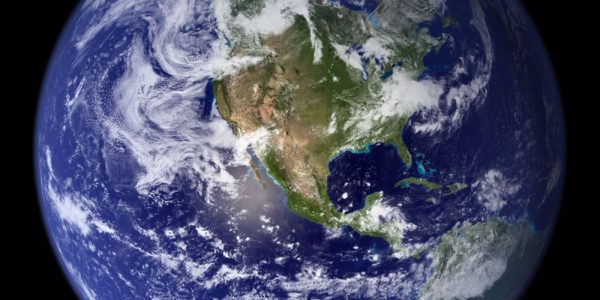The president marked the centennial of Harriet Tubman’s death a year ago by designating 25,000 acres on Maryland’s Eastern Shore as a new national monument. By 2050, if sea levels in the Chesapeake Bay continue to rise at twice the global rate because of climate change, the monument to the legendary abolitionist could be largely underwater.
A report from the Union of Concerned Scientists, released on May 20, lists 30 at-risk national landmarks and details the effects of rising sea levels, worsening wildfires and more frequent and severe floods.
“You can almost trace the history of the United States through these sites,” said Adam Markham, the report’s co-author and the director of climate impacts at UCS. “The imminent risks to these sites and the artifacts they contain threaten to pull apart the quilt that tells the story of the nation’s heritage and history.”
Jamestown, the first permanent English settlement in the Americas, is likely to be submerged by rising seas by the end of the century, according to UCS.
Other sites may become inaccessible.
“Fort Monroe in Virginia, which played a crucial role in the fall of slavery, will become an island unto itself within 70 years,” said Markham. “Castillo de San Marcos, in St. Augustine, Florida, also is extremely vulnerable.”
The fort faces increasing risks from flooding and projections from the National Oceanic and Atmospheric Administration show that, without major engineering feats, grounds surrounding the fort will become permanently inundated with three feet of sea level rise by the end of the century.
Rising seas and the threat of worsening storm surges also are endangering historic districts in Annapolis, Maryland, and Charleston, South Carolina, as well as native Hawaiian structures on the Big Island and archaeological remains in Florida.
“Early Floridians constructed highly elaborate structures out of oyster and clam shells in the Ten Thousand Islands, dating back to 1,000 B.C.,” said Markham. These sites in the Everglades sites face an imminent threat from climate impacts.”
Across the peninsula in the northern part of Canaveral National Seashore, a more than 1,200-year-old shell mound thought to be the highest in North America, is endangered. The National Park Service and the University of Central Florida have created a “living shoreline” of oyster mats, Spartina grass and mangroves to try to protect the mound from erosion.
In the West, climate change is increasing the risk of large wildfires in the Sierra Nevada mountains by driving up temperatures, reducing winter snowpack and drying out forests for longer periods. USC said that threatens historically significant structures in former Gold Rush country.
Up north, in Alaska, melting sea ice and thawing permafrost allowed winter storms to erode the coastlines of Cape Krusenstern National Monument and the Bering Land Bridge National Preserve in Kotzebue Sound. The report said the damage is occurring at an unprecedented rate. “Irreplaceable prehistoric artifacts are actually crumbling out of the shorelines in these Alaskan sites and washing out to sea,” said Markham.
Meanwhile, in the Southwest, there have been intense fires followed by heavy rains during the past 15 years.
“Massive fires have swept through Mesa Verde National Park and Bandelier National Monument and other southwestern sites, damaging ancient pueblo masonry, petroglyphs and pottery,” said Markham. “Heavy rains and the extraordinary floods that have followed some of these fires have caused even more damage, destroying trails, damaging adobe buildings and washing away vital archaeological resources.”
The report, said UCS press secretary Lisa Nurnberger, is meant to be illustrative rather than exhaustive, “since we know it doesn’t capture every important at-risk historic and cultural site. If it had, it would be far, far longer than it is.”
The researchers came across other sites where climate change is taking a toll, she said. “One of those places is the Apostle Islands,” a group of 22 islands in Lake Superior, off the Bayfield Peninsula in far northern Wisconsin. The National Park Service refers to the Apostle Islands as the “jewels of Lake Superior.”
The Society for American Archaeology, a nonprofit dedicated to protecting archaeological heritage, issued a statement in conjunction with the report’s release, calling for more attention to be paid to preserving endangered archaeological sites. It’s the first time the group has sought to draw attention to the damage climate change is causing.
To slow the rate of change and give archaeologists, historic preservationists and land managers time to protect the sites, scientists say carbon emissions must be reduced, said Angela Anderson, director of the Climate and Energy Program at UCS. “Cutting carbon emissions significantly and quickly can slow the pace of sea level rise … and slow the expansion of the wildfire season.”
